Applying Whole Organism Thinkingto the Timing of Spaying Debate
Click on publication titles below to download The Murphy Foundation's key scientific manuscripts on this subject matter.
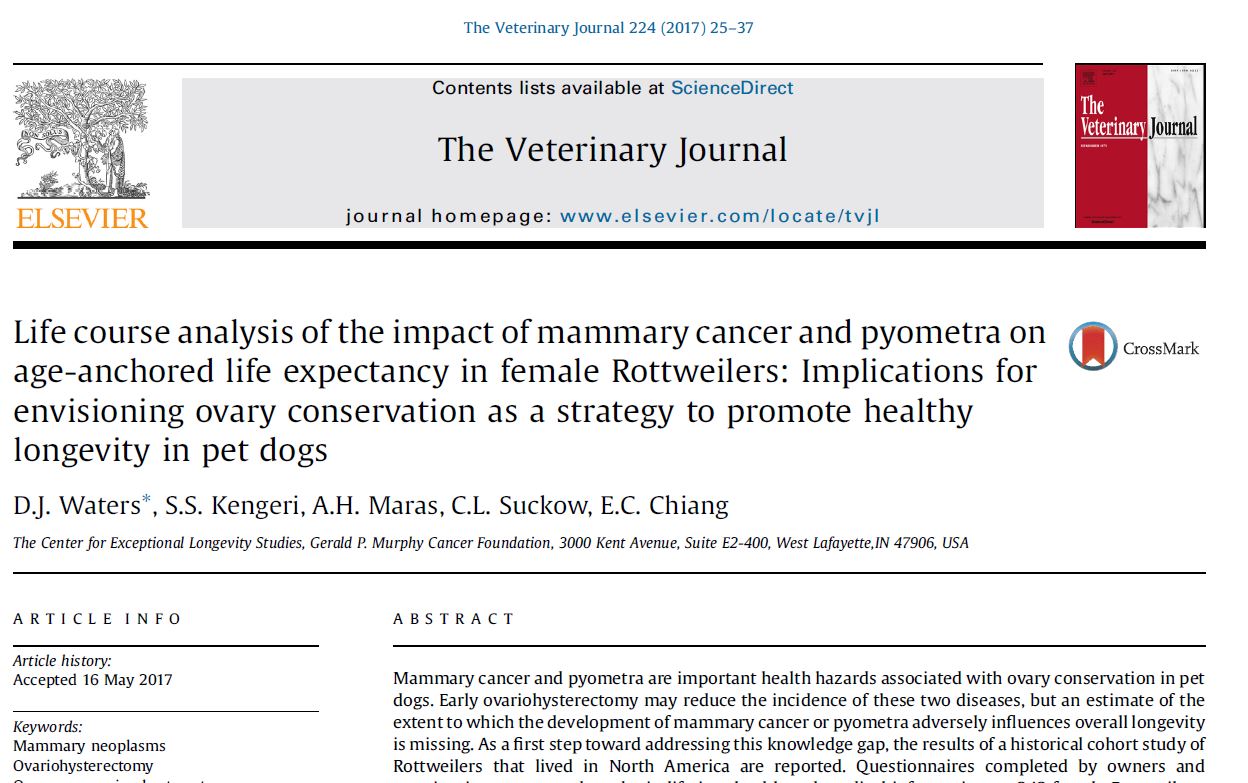
Life course analysis of the impact of mammary cancer and pyometra on age-anchored life expectancy in female Rottweilers: Implications for envisioning ovary conservation as a strategy to promote healthy longevity in pet dogs. The Veterinary Journal 2017; 224(1):25-37.
Mammary cancer and pyometra are widely recognized as important, ovary-driven health hazards of pet dogs. Early ovariohysterectomy (spay) can reduce the incidence (occurrence) of these two diseases. In this manuscript, Dr. Waters and his research team report results of the first-ever breed-specific, life course analysis of the impact of mammary cancer and pyometra on life expectancy and premature mortality in dogs. The analysis shows that at no time points during the life course was the current or future diagnosis of mammary cancer or pyometra associated with shortened survival compared to females who never developed these conditions.
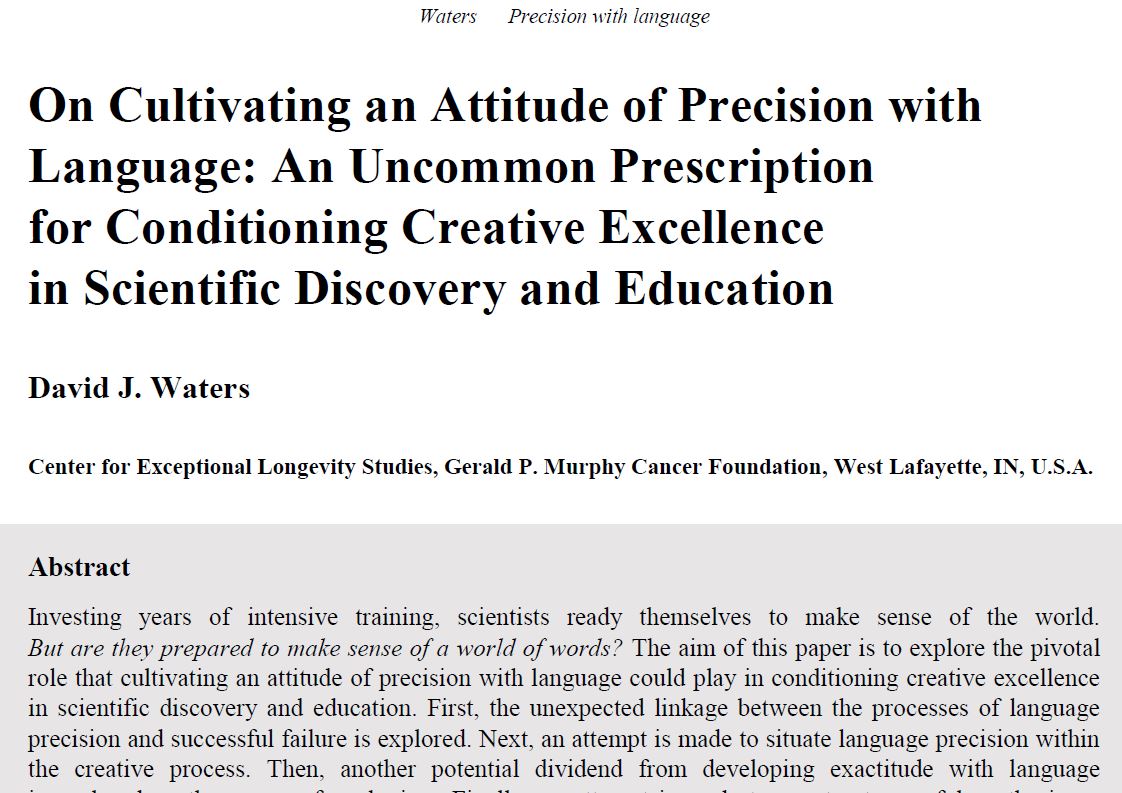
On cultivating an attitude of precision with language: An uncommon prescription for conditioning creative excellence in scientific discovery and education. TEXT 2017 April; Special Issue 40.
In this paper, Dr Waters sheds light on the pivotal role that cultivating an attitude of precision with language can play in sparking creative thinking and in advancing scientific discovery. This work was provoked by a creativity project conducted with colleagues in Australia. The manuscript develops several of Dr. Waters’ ideas about the ways in which the scientific method is limited by language. It builds on the importance of: the act of creating new words (neologism) such as whole organism thinking; the removing of old words that hinder progress (decidologism) such as spayed or intact at the time of death; and helping scientists and non-scientists to develop the method they will use to shape and re-shape their beliefs in response to new information.
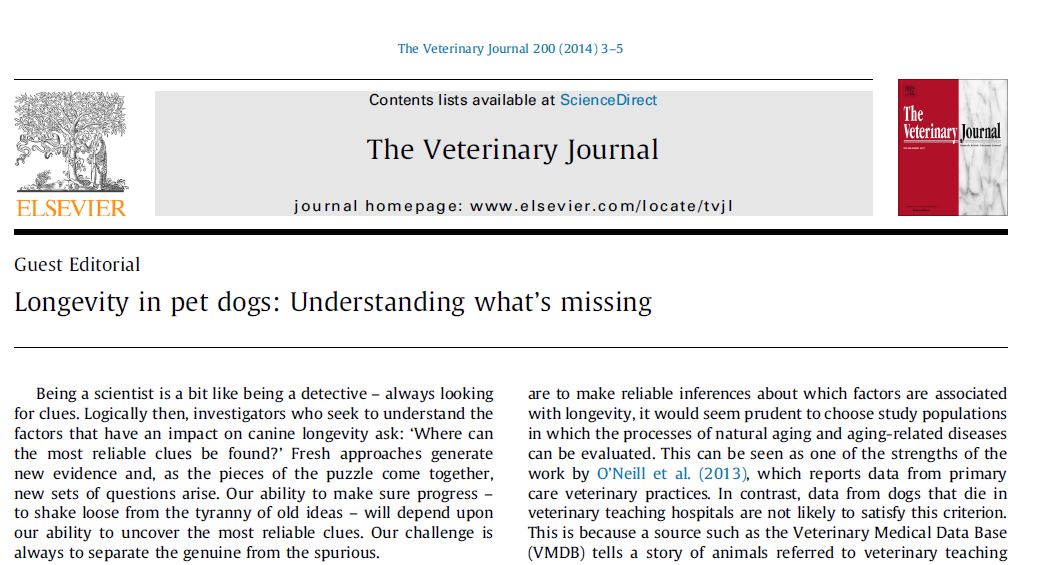
Longevity in pet dogs: Understanding what’s missing. The Veterinary Journal 2014; 200(1):3-5.
In this invited editorial published in a top European veterinary journal, Dr. Waters urges us
to take a closer look at longevity research in dogs so we can gain an understanding
of what’s missing. To summarize: Although the biology of successful aging is unquestionably
complex, solid progress in successful aging hinges on closer attention to two concepts:
Life Course Perspective and Whole Organism Thinking.
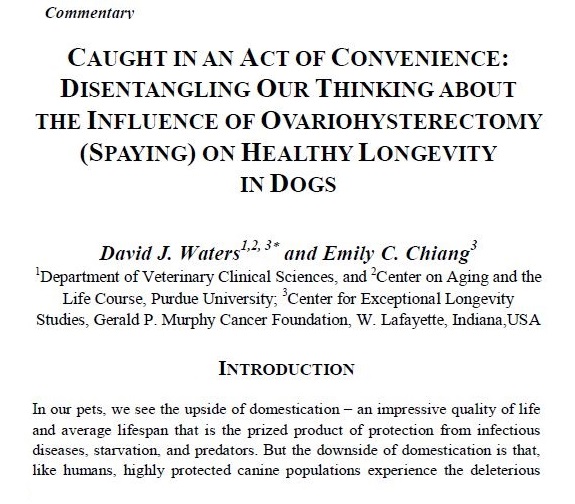
Caught in an act of convenience: Disentangling our thinking about the influence of ovariohysterectomy (spaying) on healthy longevity in dogs. In: Domestication History, Genetics, Behavior and Implications for Health. Nova Science Publishers Inc.; 2013; 115-120.
Ovaries are endocrine organs, not just reproductive units. When we remove endocrine organs,
we can expect to re-set the system, impact overall health. This essay uses accessible language
to describe how we might direct our re-thinking and shift the dialogue to illuminate
the longevity benefits of ovaries. If you are a breeder or pet owner, we invite you to download this manuscript which contains specific statements and explanations that we have highlighted for you to share with other pet owners and DVMs. (download the highlighted version)
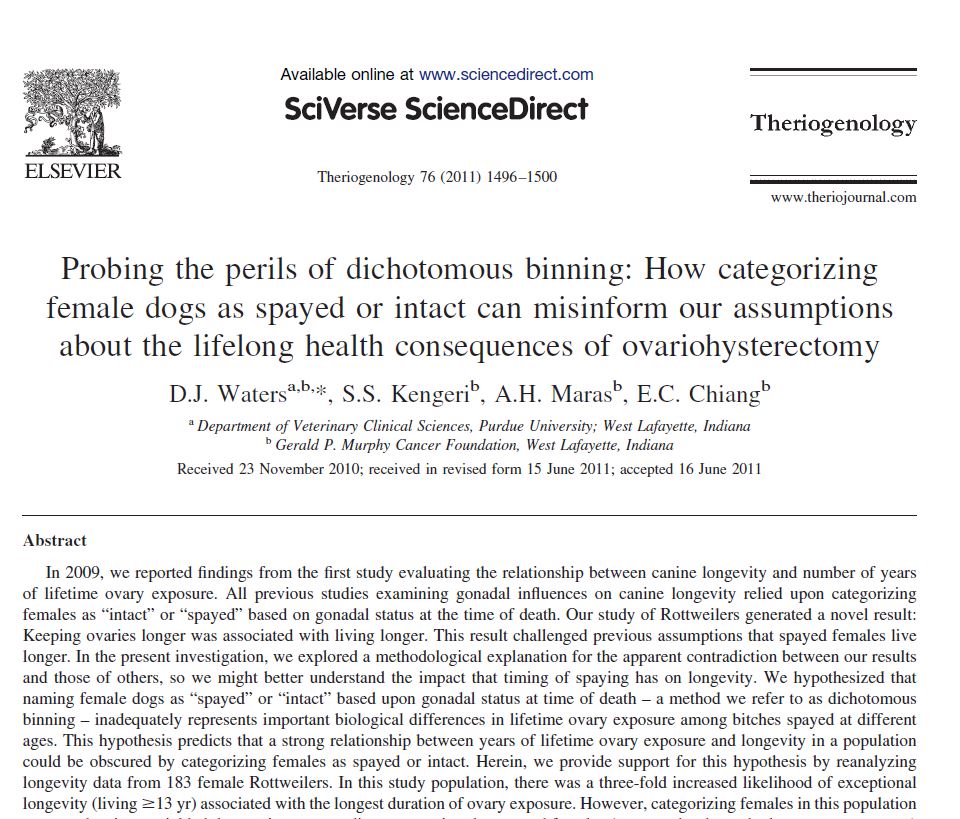
Probing the perils of dichotomous binning: How categorizing female dogs as spayed or intact can misinform our assumptions about the lifelong health consequences of ovariohysterectomy. Theriogenology 2011; 76:1496-1500.
Previous studies on spaying and longevity had categorized bitches as spayed or intact based on
gonad status at time of death. In this paper, we showed this common method of categorizing
females – ignoring the timing of spaying in each bitch – distorts the real relationship
between number of years of ovary exposure and longevity. Our conclusion: Continuing to
categorize bitches based upon whether they are spayed or intact at time of death
is an inadequate method for representing important biological differences in lifetime
ovary exposure. This can lead to misleading assumptions about the overall health
consequences of ovariohysterectomy.
